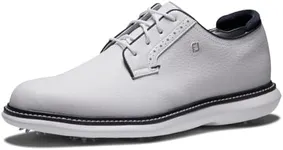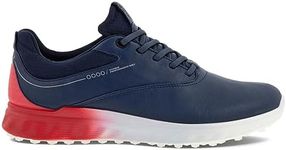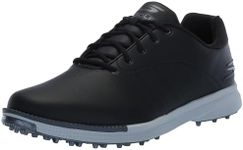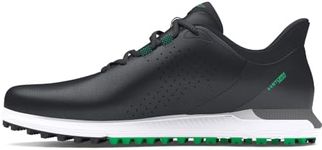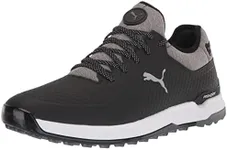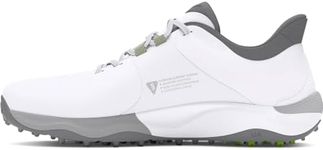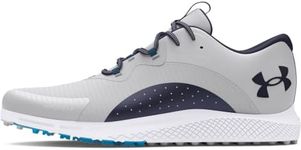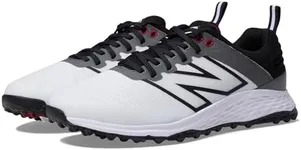Buying Guide for the Best Golf Shoes
Choosing the right golf shoes can make a big difference in your comfort, stability, and performance on the course. The right pair will help you maintain balance during your swing, keep your feet comfortable over several hours, and provide the right grip for different weather and course conditions. When shopping for golf shoes, it's important to consider how often you play, the typical weather you encounter, and your personal comfort preferences. Understanding the key features will help you find a pair that matches your needs and enhances your game.Type (Spiked vs. Spikeless)This refers to whether the shoes have removable spikes on the sole or a flat, textured bottom. Spiked shoes offer more grip, especially on wet or hilly courses, making them a good choice if you play in challenging conditions or want maximum stability. Spikeless shoes are lighter and more versatile, often more comfortable for walking and can be worn off the course. If you play mostly on dry, flat courses or value comfort and convenience, spikeless might be best. If you prioritize traction and play in varied conditions, consider spiked shoes.
MaterialGolf shoes are commonly made from leather, synthetic materials, or a combination. Leather is durable, water-resistant, and molds to your foot over time, making it a good choice for frequent players or those who play in wet conditions. Synthetic materials are lighter and often more breathable, which can be ideal for hot weather or occasional golfers. If you play in different weather or want shoes that last, leather is a solid pick. For lightweight comfort and breathability, synthetic materials are suitable.
WaterproofingThis indicates whether the shoes can keep your feet dry in wet conditions. Some shoes are fully waterproof, while others are only water-resistant or not protected at all. If you often play early in the morning, in rain, or on dewy grass, waterproof shoes are important to keep your feet comfortable. If you mostly play in dry weather, you might not need full waterproofing and can focus on breathability instead.
Fit and ComfortFit and comfort are about how the shoes feel on your feet, including the width, cushioning, and support. Some shoes are designed for wider or narrower feet, and the amount of padding can vary. It's important to try on shoes and walk in them to ensure they don't pinch or rub. If you walk the course, prioritize cushioning and support. If you ride in a cart, you might focus more on fit and stability.
WeightThe weight of golf shoes can affect how tired your feet feel after a round. Lighter shoes are easier to walk in and can reduce fatigue, while heavier shoes may offer more stability and support. If you walk the course often, lighter shoes can help you stay comfortable. If you want extra support or play in rough terrain, a slightly heavier shoe might be better.
BreathabilityBreathability refers to how well the shoes allow air to circulate, keeping your feet cool and dry. Shoes with mesh panels or breathable linings are best for hot weather or if your feet tend to sweat. If you play in warm climates or during summer, prioritize breathability. In cooler or wetter conditions, you might prefer less breathable but more water-resistant shoes.
TractionTraction is about how well the shoes grip the ground, which affects your stability during swings. Spiked shoes generally offer more traction, while spikeless shoes rely on rubber patterns. If you play on slippery or uneven courses, look for shoes with strong traction features. For flat, dry courses, moderate traction may be enough.
